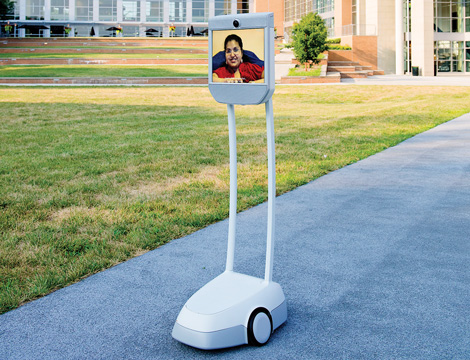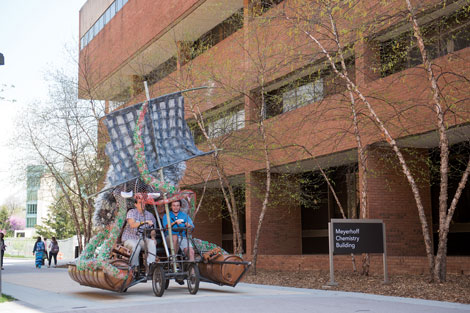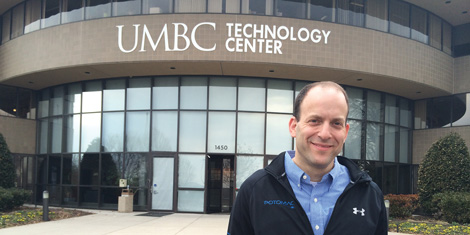Like many UMBC alumnae, Kavita Krishnaswamy ’07, mathematics and computer science, feels driven to create a better world for the next generation. More than most alumnae, however, she has a visceral, personal sense of what that better world might require.
Krishnaswamy lives with spinal muscular atrophy, a progressive neurological condition that has gradually robbed her of the ability to move below the neck. Today, she is a doctoral student in computer science at UMBC, and she has devoted the past six years of her life to designing prototypes for robotic assistive tools that could give more independence to people with severe neurological challenges.
“As a person with a disability, I have some control over my environment,” she says. “But I think we’re on the verge of a new wave of assistive technologies that could provide much more independence to people with disabilities and their caregivers.”
The digital prototypes that Krishnaswamy has painstakingly designed during the past few years are part of that new wave. Large slings and lifters that can safely move patients from a lying to a sitting position. A five-armed robot that can help reposition patients in bed. And finely-coordinated robots that can assist with eating and toothbrushing tasks.
“Kavita is just unbelievably focused and unbelievably driven,” says Tim Oates, a professor of computer science and electrical engineering. “She wants to create tools that will help herself, but more than that, she wants to create tools that will help people in the future.”
Krishnaswamy was born in India and raised in Columbia. She entered UMBC as an undergraduate through the Meyerhoff Scholars Program, and she says that she immediately felt welcomed in the campus community. She credits Sue Evans, a senior lecturer in computer science and electrical engineering, with helping her stay determined in programming, and Suddappa Seetharama Gowda, a professor of mathematics, with helping her find tools to continue to type complex mathematical formulas even as her handwriting deteriorated.
During her undergraduate years, Krishnaswamy was occasionally able to visit campus, but she has pursued her entire doctoral program from home, with the aid of Skype and other software. “She’s been able to do every single class,” Oates says. “She can hear the lectures, see the boards, and participate in the discussions. I’m very pleased with how we’ve been able to work with her as an institution.”
Krishnaswamy says it is vital for the designers of assistive technologies to spend more time listening to the people who might actually use their devices. “Many assistive devices so far have been designed with caregivers in mind,” she says. “And I understand that – they have great needs. But there’s also a need to assist the people with disabilities themselves.”
To fulfill the principle of participatory design in her own endeavors, Krishnaswamy has assembled a network of people with disabilities, and consults with them as she moves her prototypes from digital form to physical form.
Krishnaswamy herself, meanwhile, is acting as an ambassador to Suitable Technologies, the makers of a technology known as Beam – a wheeled robot with a mounted camera that allows users to visit museums and conferences without being physically present.
“It’s a wonderful technology that has allowed me to travel across the world,” Krishnaswamy says.
For Krishnaswamy’s own robotic protoypes, the next step will be bringing them from idea and design to the marketplace. “I’ve been talking to a number of vendors,” she says, “and we hope to have a few things built by 2017.” A key element, she says, will be tools that allow users with severe disabilities to control the robots with simple voice commands, mouse movements, or even facial gestures.
Oates, for his part, has little doubt that Krishnaswamy will find partners for these projects. “One of Kavita’s many strong talents,” he says, “is her ability to rally people to help her build things.”
Krishnaswamy says assistive robotics shouldn’t be understood as concerning only people with rare severe conditions like her own. With an aging population and the explosion of conditions such as Alzheimer’s disease, many millions of people and their caregivers could benefit from smarter and nimbler robots. “We need to create more technology and better technology,” she says, “so that society as a whole can be more independent.”
— David Glenn
Tags: Fall 2015




